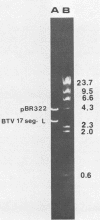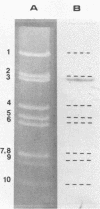Abstract
The genes of the bluetongue virus (BTV) serotype 17 have been cloned into pBR322 by tailing both strands of the double-stranded RNA with polyadenylic acid, transcribing them with reverse transcriptase with an oligodeoxythymidylic acid primer, hybridizing the cDNA products, and completing them into duplex structures with the Klenow fragment of Escherichia coli DNA polymerase. After cloning the double-stranded cDNA molecules into pBR322, the complete sequence of the cloned L3 gene was determined. The clone is 2,772 nucleotides long (1.78 X 10(6) daltons), excluding the 3' polyadenylic acid sequence, and has an open reading frame which codes for a protein of some 901 amino acids (103,412 daltons). This clone can hybridize L3 RNA segments of three other U.S. BTV serotypes, BTV-10, -11, and -13 in addition to -17 but not the equivalent RNA segment of epizootic hemorrhagic disease virus of deer, an orbivirus related to BTV.
Full text
PDF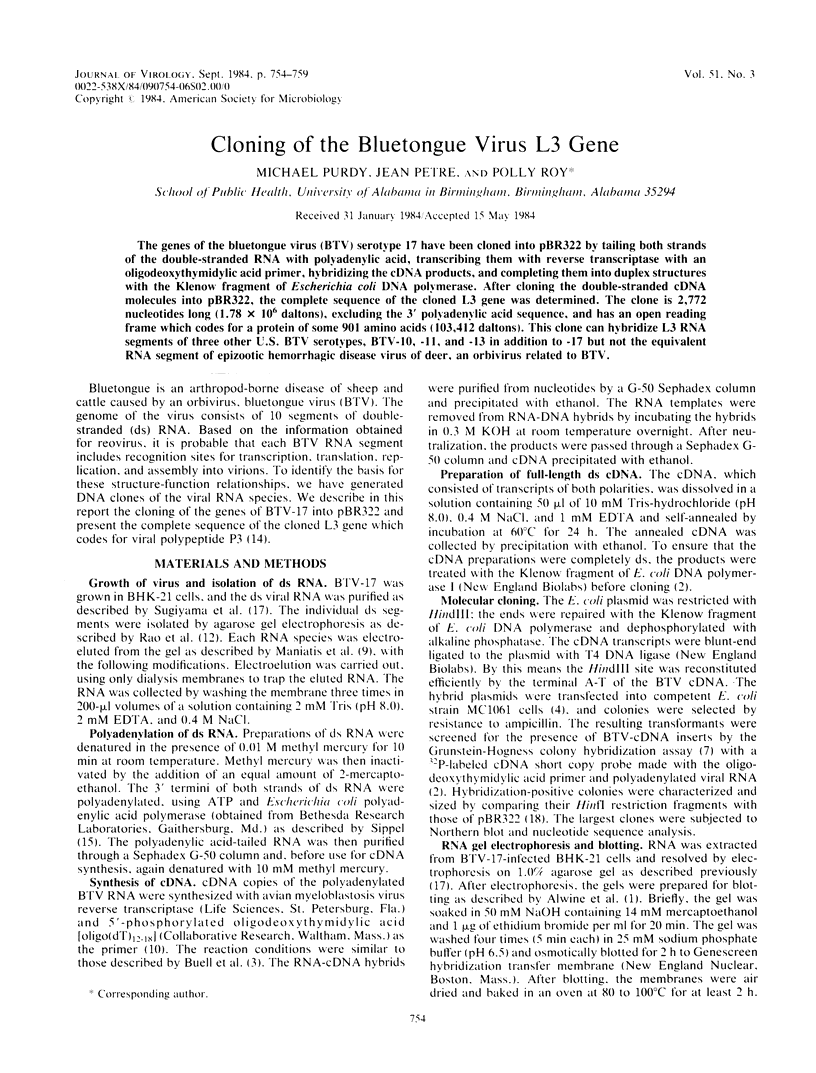
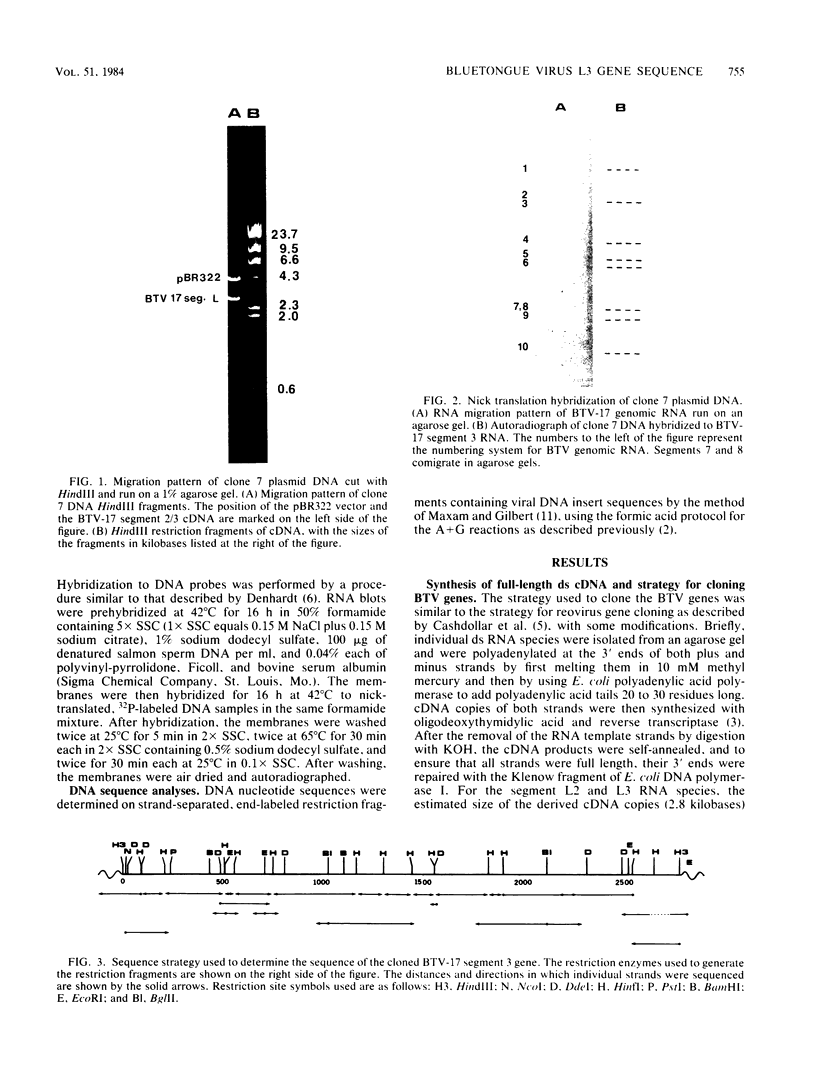
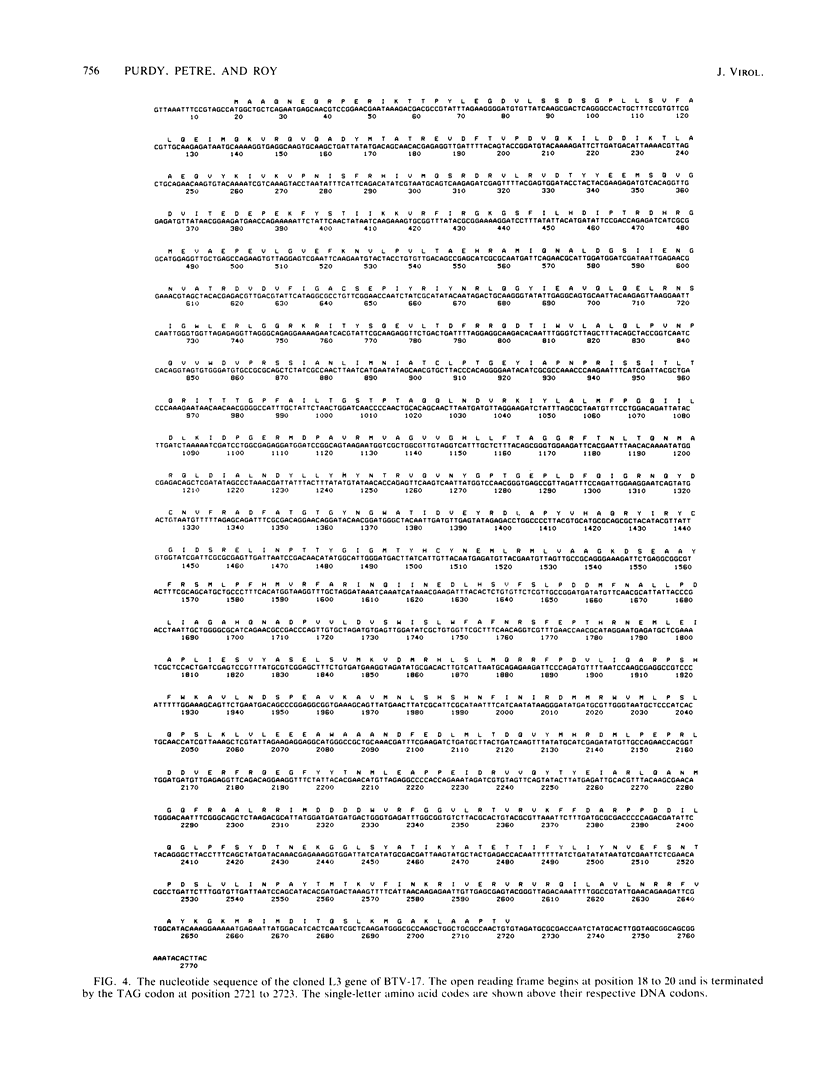
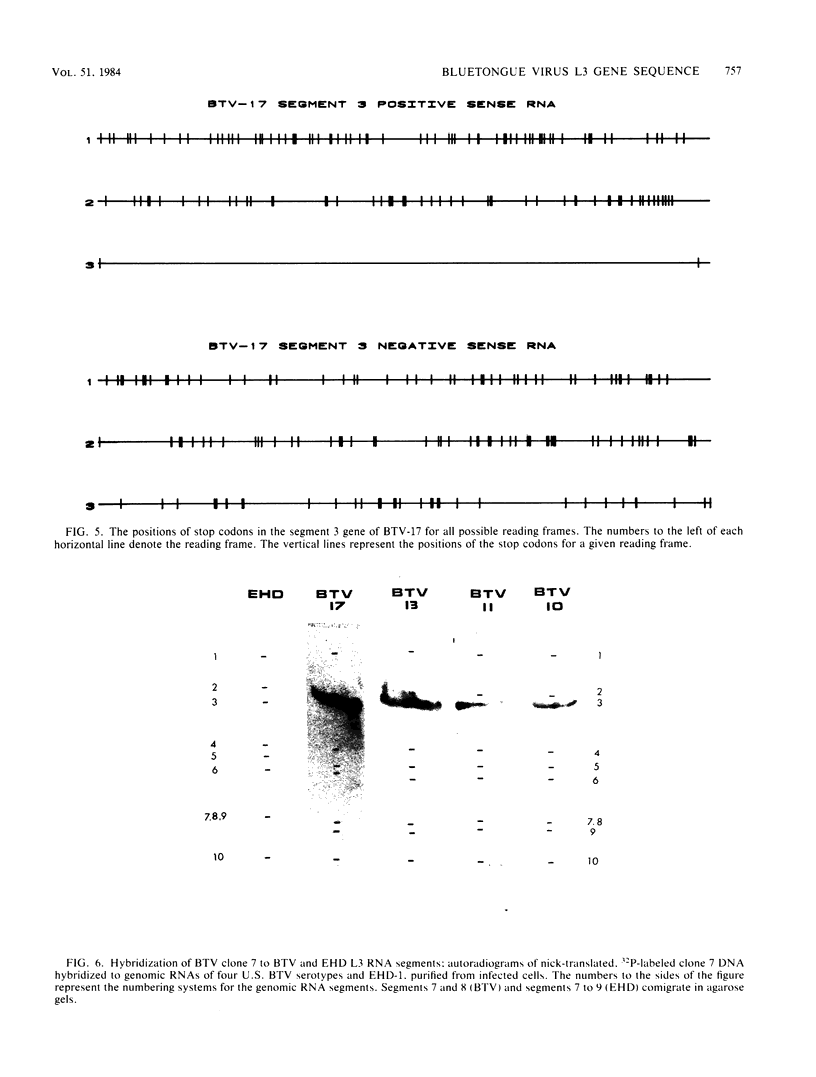
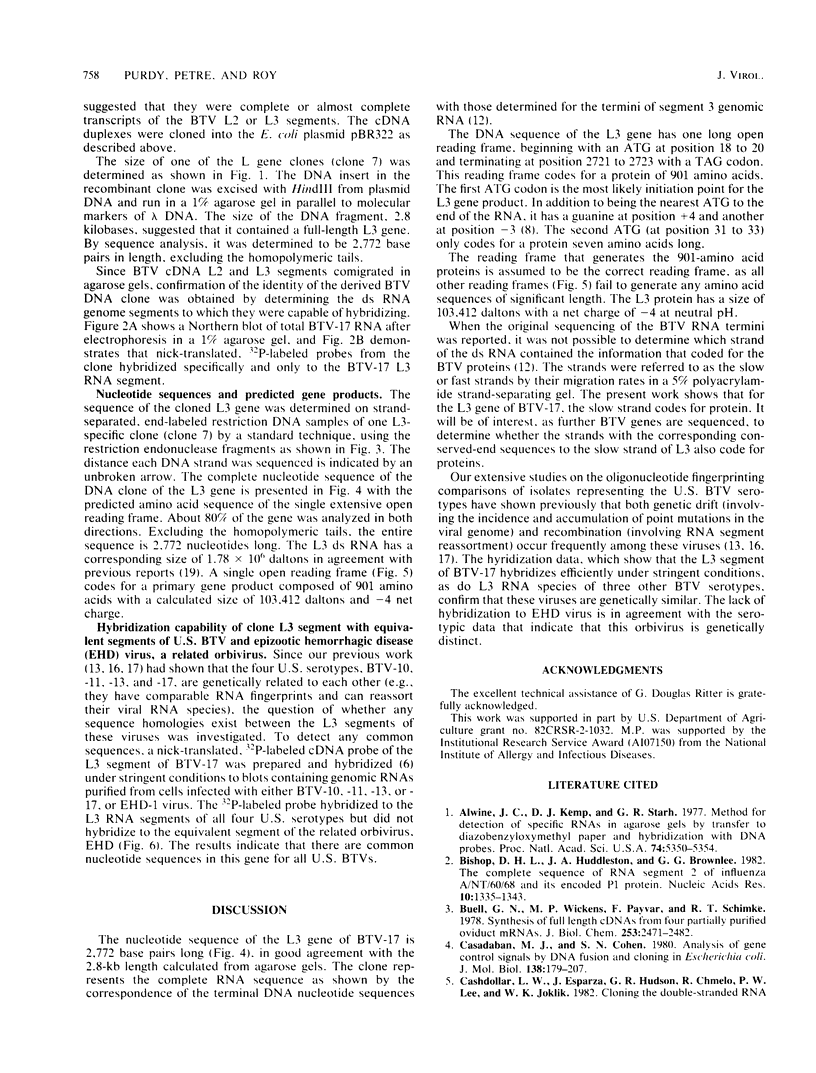
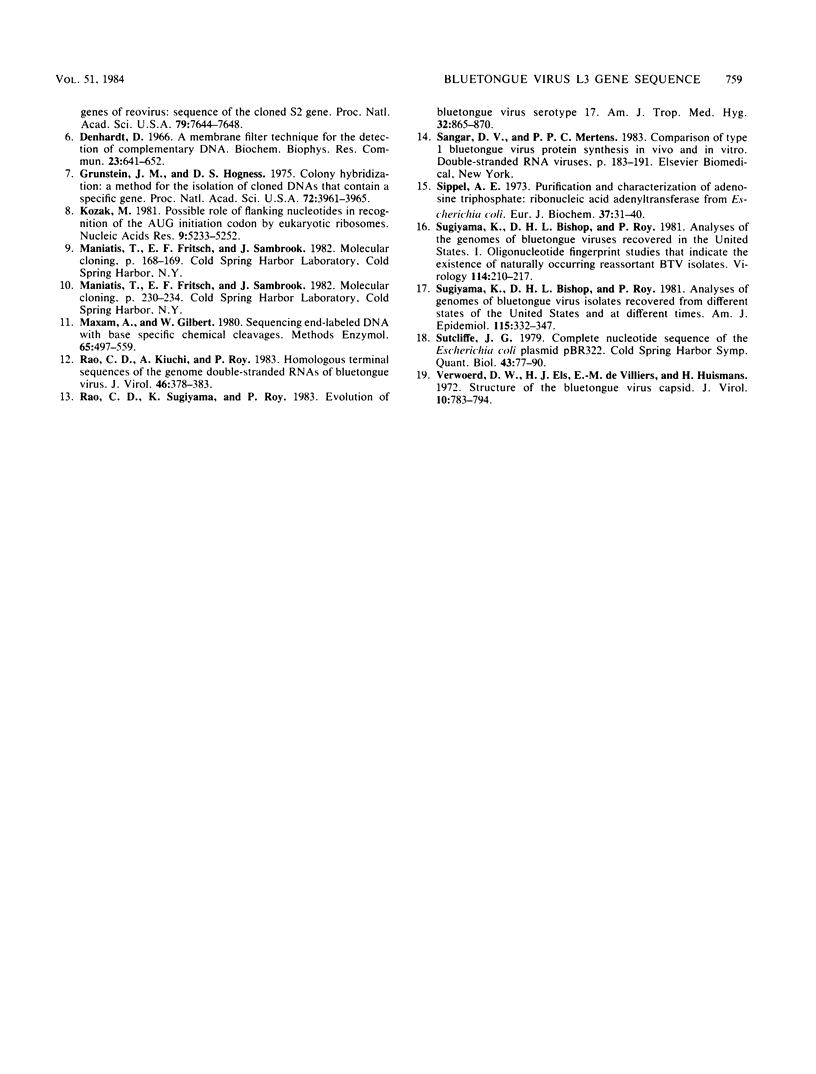
Images in this article
Selected References
These references are in PubMed. This may not be the complete list of references from this article.
- Alwine J. C., Kemp D. J., Stark G. R. Method for detection of specific RNAs in agarose gels by transfer to diazobenzyloxymethyl-paper and hybridization with DNA probes. Proc Natl Acad Sci U S A. 1977 Dec;74(12):5350–5354. doi: 10.1073/pnas.74.12.5350. [DOI] [PMC free article] [PubMed] [Google Scholar]
- Bishop D. H., Huddleston J. A., Brownlee G. G. The complete sequence of RNA segment 2 of influenza A/NT/60/68 P1 protein. Nucleic Acids Res. 1982 Feb 25;10(4):1335–1343. doi: 10.1093/nar/10.4.1335. [DOI] [PMC free article] [PubMed] [Google Scholar]
- Buell G. N., Wickens M. P., Payvar F., Schimke R. T. Synthesis of full length cDNAs from four partially purified oviduct mRNAs. J Biol Chem. 1978 Apr 10;253(7):2471–2482. [PubMed] [Google Scholar]
- Casadaban M. J., Cohen S. N. Analysis of gene control signals by DNA fusion and cloning in Escherichia coli. J Mol Biol. 1980 Apr;138(2):179–207. doi: 10.1016/0022-2836(80)90283-1. [DOI] [PubMed] [Google Scholar]
- Cashdollar L. W., Esparza J., Hudson G. R., Chmelo R., Lee P. W., Joklik W. K. Cloning the double-stranded RNA genes of reovirus: sequence of the cloned S2 gene. Proc Natl Acad Sci U S A. 1982 Dec;79(24):7644–7648. doi: 10.1073/pnas.79.24.7644. [DOI] [PMC free article] [PubMed] [Google Scholar]
- Denhardt D. T. A membrane-filter technique for the detection of complementary DNA. Biochem Biophys Res Commun. 1966 Jun 13;23(5):641–646. doi: 10.1016/0006-291x(66)90447-5. [DOI] [PubMed] [Google Scholar]
- Grunstein M., Hogness D. S. Colony hybridization: a method for the isolation of cloned DNAs that contain a specific gene. Proc Natl Acad Sci U S A. 1975 Oct;72(10):3961–3965. doi: 10.1073/pnas.72.10.3961. [DOI] [PMC free article] [PubMed] [Google Scholar]
- Kozak M. Possible role of flanking nucleotides in recognition of the AUG initiator codon by eukaryotic ribosomes. Nucleic Acids Res. 1981 Oct 24;9(20):5233–5252. doi: 10.1093/nar/9.20.5233. [DOI] [PMC free article] [PubMed] [Google Scholar]
- Rao C. D., Kiuchi A., Roy P. Homologous terminal sequences of the genome double-stranded RNAs of bluetongue virus. J Virol. 1983 May;46(2):378–383. doi: 10.1128/jvi.46.2.378-383.1983. [DOI] [PMC free article] [PubMed] [Google Scholar]
- Rao C. D., Sugiyama K., Roy P. The evolution of bluetongue virus serotype 17. Am J Trop Med Hyg. 1983 Jul;32(4):865–870. doi: 10.4269/ajtmh.1983.32.865. [DOI] [PubMed] [Google Scholar]
- Sippel A. E. Purification and characterization of adenosine triphosphate: ribonucleic acid adenyltransferase from Escherichia coli. Eur J Biochem. 1973 Aug 1;37(1):31–40. doi: 10.1111/j.1432-1033.1973.tb02953.x. [DOI] [PubMed] [Google Scholar]
- Sugiyama K., Bishop D. H., Roy P. Analyses of the genomes of bluetongue viruses recovered in the United States. I. Oligonucleotide fingerprint studies that indicate the existence of naturally occurring reassortant BTV isolates. Virology. 1981 Oct 15;114(1):210–217. doi: 10.1016/0042-6822(81)90266-x. [DOI] [PubMed] [Google Scholar]
- Sugiyama K., Bishop D. H., Roy P. Analysis of the genomes of bluetongue viruses recovered from different states of the United States and at different times. Am J Epidemiol. 1982 Mar;115(3):332–347. doi: 10.1093/oxfordjournals.aje.a113310. [DOI] [PubMed] [Google Scholar]
- Sutcliffe J. G. Complete nucleotide sequence of the Escherichia coli plasmid pBR322. Cold Spring Harb Symp Quant Biol. 1979;43(Pt 1):77–90. doi: 10.1101/sqb.1979.043.01.013. [DOI] [PubMed] [Google Scholar]
- Takanami M. RNA polymerase nascent product analysis. Methods Enzymol. 1980;65(1):497–499. doi: 10.1016/s0076-6879(80)65058-7. [DOI] [PubMed] [Google Scholar]
- Verwoerd D. W., Els H. J., De Villiers E. M., Huismans H. Structure of the bluetongue virus capsid. J Virol. 1972 Oct;10(4):783–794. doi: 10.1128/jvi.10.4.783-794.1972. [DOI] [PMC free article] [PubMed] [Google Scholar]



